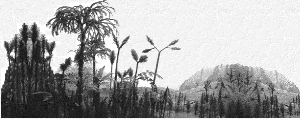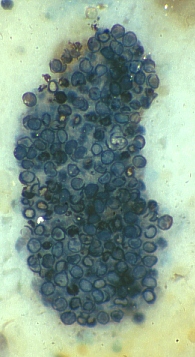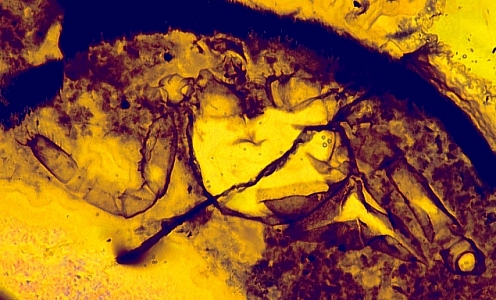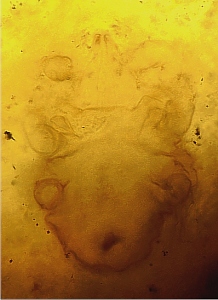

 |
|
 |
 |
The Rhynie Chert is not only famous
for the excellently preserved plant remains but also as the locality that
has yielded one of the earliest land faunas. The colonization of the land
by plants and animals took place almost simultaneously.
Plant-animal interactions are primarily documented by the many different types of coprolites which show an enormous variation in their shape and composition. These coprolites demonstrate that at least some types of animals primarily fed on dead plant material. This indicates that in early terrestrial ecosystems also animals played an important role in the recycling of organic matter and the formation of soils. Some plant axes show wound and wound repair tissue, suggesting that animals also consumed living plant material. |
| Left: A coprolite almost exclusively consisting of spores |

A trigonotarbid (spider) showing the body, several legs and the mouth parts |
During our studies several animal remains have been encountered. These are currently studied by our collegues who specialize on the Rhynie Chert fauna. Nontheless, we would not like to refrain from showing you some fine examples on this page. | 
The oldest known mite |
| © Forschungsstelle für Paläobotanik, Westfälische Wilhelms-Universität Münster |
April 2000
|